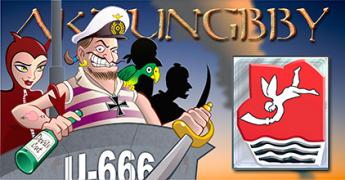 09-27-17, 11:07 AM
09-27-17, 11:07 AM
|
#2573
|
|
Gefallen Engel U-666
Join Date: Jul 2013
Location: On a tilted, overheated, overpopulated spinning mudball on Collision course with Andromeda Galaxy
Posts: 27,869
Downloads: 22
Uploads: 0
|

Quote:
|
Originally Posted by Jimbuna
Ralph Curtis (pictured), British aerial ace with 15 victories, is killed in action in a dogfight with German pilot Hermann Göring.
 |
AS often happens in WWI victory tallies, not enough credit is given to the observer of two-seater aircraft, in this case the lethal Bristol F.2b . Desmond Percival Fitzgerald Uniacke, himself a commissioned 2nd Lieutenant, was credited with thirteen aerial victories, all in conjunction with the pilot Ralph Luxmore Curtis. Victories number ten and fifteen were actually shared kills with other aircraft and by the accounting standards of later wars, should be accounted 1/2 kills. Victory # 10 was shared with no less than Lieutenant Keith Rodney Park, WWII Air Chief Marshall and commander in the Battle of Malta and dubbed 'the defender of London'. Lt Uniacke survived the war as a POW-relinquished his commission in 1919, and died in 1933; he was a wine salesman.  https://en.wikipedia.org/wiki/Aerial_victory_standards_of_World_War_I
https://en.wikipedia.org/wiki/Aerial_victory_standards_of_World_War_I
Quote:
In cases where more than one pilot (or observer) was involved in a British victory, practice was especially inconsistent. Since after all only one enemy aircraft had been destroyed, the victory at unit level (to the squadron or wing for instance) was counted as one. On the other hand, in some cases all pilots concerned might receive a full credit to his personal score, as victories at this time were not divided fractionally, in the way that became common practice later. As a striking example of this, no fewer than twelve Royal Flying Corps pilots each claimed a victory because they helped destroy an Albatros D.III on 8 April 1917. However, some squadrons counted such victories only to the unit concerned without crediting them to an individual, or counted "shared" scores separately from a particular pilot’s 'solo' victories. In the case of two-seater crews, both pilot and observer might each receive credit for a victory. The usual rule of thumb credited all victories to the pilot of a Sopwith 1˝ Strutter or Bristol F.2 Fighter two-seater, but the observer/gunner was credited only for those instances where he fired his weapon. Some squadrons kept separate lists of pilot and observer aces; some did not.[ Some squadrons kept separate lists of pilot and observer aces; some did not.[
|
Interestingly, Sailor Steve's question in the death of Werner Voss: "only one pilot (Rhys- Davies) was given credit for the victory??" I suspect might have been a dignity-saving collaboration 'twixt the 7 English combatants in consideration of the profound respect for the fallen great ace and his marvelous bravery... due to an awareness of a overinflated 'coup-counting' system: the 'usual rule of thumb' may have been dispensed with by seven of the best fighter pilots in the Royal Flying Corps – McCudden, Geoffrey H Bowman, Reginald T C Hoidge, Richard A Maybery, Arthur P F Rhys Davids, Keith K Muspratt and Victor P Cronyn.
__________________

"Only two things are infinite; The Universe and human squirrelyness; and I'm not too sure about the Universe"
Last edited by Aktungbby; 09-27-17 at 11:36 AM.
|

|

|